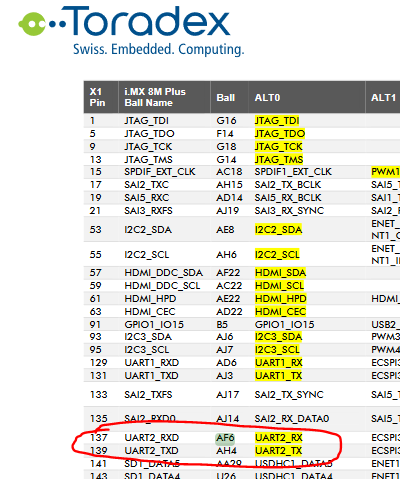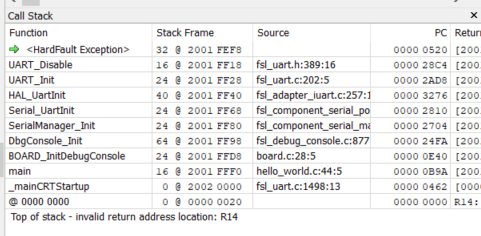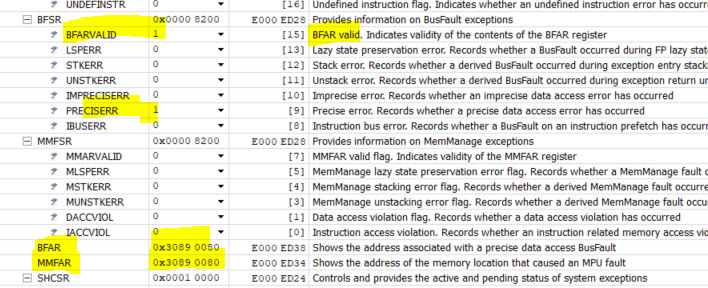Hi @vix,
I tested myself here and this can be accomplished with the image.json inside the image file. Since we’re dealing with U-Boot, TorizonCore Builder is not useful, since we can’t change U-Boot setting with it.
In this case, I simply added a few lines to my image.json and the u-boot-initial-end-sd files.
Here are the steps:
- First, I downloaded an image from our feed,
torizon-core-docker-verdin-imx8mm-Tezi_6.1.0+build.1 in my case, but you can choose a different one.
- Next, I moved my Cortex-M binary inside this folder:
.rwxr-xr-x 6,260 hiago hiago 23 Mar 16:34 hello_world.bin
.rw-r--r-- 1,566 hiago hiago 23 Mar 16:41 image.json
.rw-r--r-- 1,314,376 hiago hiago 16 Jan 11:29 imx-boot
.rw-r--r-- 79,368 hiago hiago 16 Jan 12:00 LA_OPT_NXP_SW.html
.rw-r--r-- 212,480 hiago hiago 16 Jan 11:33 marketing.tar
.rw-r--r-- 183 hiago hiago 16 Jan 11:33 prepare.sh
.rw-r--r-- 2,488 hiago hiago 16 Jan 11:33 toradexlinux.png
.rw-r--r-- 217,362,695 hiago hiago 16 Jan 11:59 torizon-core-docker-verdin-imx8mm.ota.tar.zst
.rw-r--r-- 4,232 hiago hiago 23 Mar 16:35 u-boot-custom-env-sd
.rw-r--r-- 4,127 hiago hiago 16 Jan 10:04 u-boot-initial-env-sd
.rw-r--r-- 18 hiago hiago 16 Jan 11:33 wrapup.sh
- Now, you need to edit the image.json to copy the binary when Toradex Easy Installer is going to install your image.
--- image.json.old 2023-03-24 13:43:59.939387885 -0300
+++ image.json 2023-03-23 16:41:59.023515994 -0300
@@ -30,7 +30,8 @@
"filesystem_type": "ext4",
"mkfs_options": "-E nodiscard",
"filename": "torizon-core-docker-verdin-imx8mm.ota.tar.zst",
- "uncompressed_size": 599.375
+ "uncompressed_size": 599.375,
+ "filelist": ["hello_world.bin:/ostree/deploy/torizon/var/"]
}
}
]
So in this case I’m telling Toradex Easy Installer to move m binary to /var/ when it’s going to install TorizonCore.
- Finally, I added the variables to
u-boot-initial-env-sd to automatically start the auxiliary core.
--- u-boot-initial-env-sd 2023-01-16 10:04:52.846678207 -0300
+++ u-boot-custom-env-sd 2023-03-23 16:35:53.519128019 -0300
@@ -1,4 +1,4 @@
-bootcmd=run bootcmd_mmc0
+bootcmd=run m4boot; run bootcmd_mmc0
bootdelay=1
baudrate=115200
ethprime=FEC
@@ -53,5 +53,6 @@
initrd_high=0xffffffffffffffff
setup=setenv setupargs console=tty1 console=${console},${baudrate} consoleblank=0 earlycon
update_uboot=askenv confirm Did you load flash.bin (y/N)?; if test "$confirm" = "y"; then setexpr blkcnt ${filesize} + 0x1ff && setexpr blkcnt ${blkcnt} / 0x200; mmc dev 0 1; mmc write ${loadaddr} 0x2 ${blkcnt}; fi
+m4boot=load mmc 0:1 ${loadaddr} 0x7e0000; cp.b ${loadaddr} 0x7e0000 10000; bootaux 0x7e0000;
In this case, I assume you’re using TCM memory, that’s why I used 0x7e0000.
After flashing the image, your binary will be in place and will also be started automatically.
I also did a test with the platform and did an OS update and the Cortex-M kept working. I’m not sure what’s going to happen if you do a bootloader remote update, because we need to make sure u-boot saves this custom m4boot variable.
Hope this helps.
Best Regards,
Hiago.







